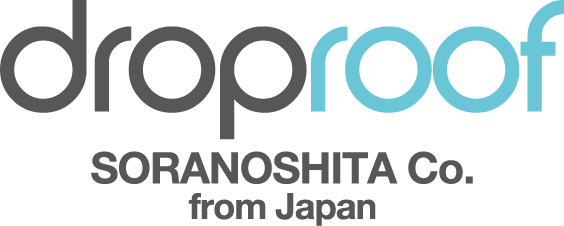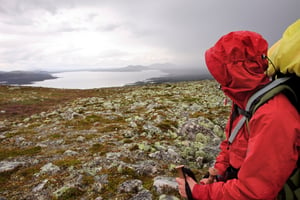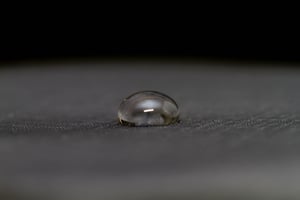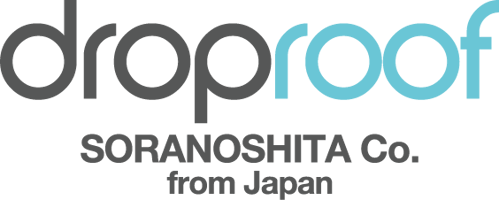We already offer DWR treatment services in Japan. The most frequently asked question is "How long...
Rainwear Water Repellency: How Long Does It Last? ~ Analyzing Detailed Data and Case Studies
Hello outdoor enthusiasts! Today, I'll be diving into a question that many of you have probably wondered about: "How long does the water repellency of rainwear last?" Let's explore this topic with concrete data and real-world examples.
No Clear-Cut Answer for Durability
"How long will my rainwear's water repellency last?" This question is challenging even for technical experts to answer. Why? Because water repellency doesn't gradually decrease with time—it varies significantly depending on usage conditions.
If you simply store your rainwear in a closet, its water repellency will hardly decrease at all. The performance only diminishes when you actually use or wash the garment. So honestly, the answer to "how long will it last?" is "it depends on how you use it."
What is DWR?
DWR (Durable Water Repellent) is a special coating applied to fabric surfaces that prevents water from soaking in and helps water droplets bead up and roll off the surface.
It's important to understand that DWR provides "water repellency," which is different from "waterproofness." Waterproofness (measured as water pressure resistance) refers to a rainwear's ability to block water penetration, while water repellency refers to its ability to repel water. These are separate functions.
Three Factors That Reduce Water Repellency and Specific Case Studies
Rainwear water repellency primarily decreases due to three factors:
1. Reduced Performance Due to Contamination
When dirt (especially oils) adheres to the surface, the water-repellent effect is significantly compromised. For example, rainwear with sunscreen on it will no longer repel water in those specific areas.
Field Example: One trekking guide reported that after using hand cream and touching the cuffs of his rainwear, those areas dramatically lost water repellency and began absorbing rain.
2. Reduction Due to Water Familiarization
Repeated exposure to water gradually weakens the water-repellent treatment. This is particularly noticeable during extended exposure to heavy rain.
Field Example: Observations show that rainwear used during a three-day rainy camping trip showed visibly reduced water repellency by the third day compared to the first day. Water droplets no longer beaded up but instead spread out on the fabric surface.
3. Reduction Due to Abrasion
Physical friction gradually wears away the water-repellent coating. Areas like shoulders and back, where backpack straps make contact, are particularly susceptible to this wear.
Field Example: A mountaineer who used the same rainwear for 15 climbing trips found that water repellency decreased specifically on the shoulder areas where backpack straps rubbed, resulting in those areas getting wet while the rest of the jacket remained dry.
Scientific Data on Water Repellency Durability After PFAS-Free Changes
In recent years, rainwear water-repellent treatments have changed significantly due to environmental concerns. Traditional "fluorine-based" repellents (PFAS) are being replaced by "PFAS-free" (fluorine-free) alternatives. How exactly has this change affected performance?
The Evolution from C8 to C6, and Then to C0
Water repellents are classified by their chemical structure as follows:
- C8: Perfluorooctyl groups (C8F17) containing fluorine compounds → Metabolite: Perfluorooctanoic acid (PFOA)
- C6: Perfluorohexyl groups (C6F13) containing fluorine compounds → Metabolite: Perfluorohexanoic acid (PFHxA)
- C4: Perfluorobutyl groups (C4F9) containing fluorine compounds → Metabolite: Perfluorobutanoic acid (PFBA)
- C0: Water repellents containing no organic fluorine compounds
The "C" number represents the number of carbon atoms, with smaller numbers indicating higher safety, particularly from an environmental perspective.
Environmental and Health Data
According to KRI research data, the accumulation of C6 metabolites in mammals is approximately 1/100 that of PFOA (the C8 metabolite), and C4 metabolite accumulation is estimated to be a further 1/10 to 1/100 of that. For example, data shows the half-life of PFOA in humans (the time required for blood concentration to halve) exceeds one year, highlighting the long-term environmental persistence concerns.
PFAS environmental persistence is extremely high, with some substances taking up to 1,000 years to decompose completely. This has led to the transition toward C0 (non-fluorine) options for environmental considerations.
Scientific Comparison of Water Repellency Performance and Durability
Performance characteristics of each type of water repellent show the following trends:
C8 (Long-chain fluorine compounds)
- High water and oil repellency
- Molecules align to form stable crystal structures
- Less degradation from friction and washing
C6 (Short-chain fluorine compounds)
- Slightly inferior water repellency compared to C8
- Molecular alignment is more easily disrupted, with poorer crystallization than C8
- Faster degradation from washing and use compared to C8
C0 (Non-fluorine systems)
- Initial water repellency is relatively good but durability is challenging
- Significantly reduced ability to repel oils
- Water repellency easily compromised by hand oils and dirt
According to Senken Shimbun reports, "C8 types have a clean crystal arrangement on the surface that provides high water and oil repellency, but C6 and below don't crystallize, resulting in reduced performance." This insight explains the difference in water repellency performance at the molecular level.
Observable Changes in Water Repellency
Drop-proof surveys indicate that between 2014 and 2015 models, many outdoor brands switched from C8 to C6 treatments, with noticeable changes in water repellency. Specifically, water-repelling capability weakened, and water was more likely to remain on the surface.
Particularly notable changes include:
- Shortened duration of water repellency (C8 maintains effectiveness even after 100+ washes, while C0 shows significant decline after 10-20 washes)
- Reduced resistance to oil stains (areas with skin oils or food oils lose water repellency)
Latest Technologies and Maintenance Methods for Long-Lasting Water Repellency
With the decreased durability of water repellency due to PFAS-free transitions, let's look at what users can do and what manufacturers are developing in terms of the latest technologies.
Cutting-Edge Water-Repellent Coating Technologies
Various technological innovations are being developed to achieve high water repellency performance with environmentally friendly PFAS-free treatments.
Fabric Structure Technologies
To complement the performance of non-fluorine water repellents, technologies that incorporate innovations into the fabric structure itself are being developed. Particularly noteworthy is "biomimicry" technology that incorporates ideas from nature.
For example, Teijin Frontier's "Lectus" mimics lotus leaf surface structures, incorporating microscopic bumps and grooves into the weave structure to repel water. The company's "Minotec" creates a convex structure only in the horizontal direction of plain weaving, allowing water droplets to roll off through point contact with the grooves. These approaches enhance water repellency through physical structure in addition to chemical water repellents.
New Generation Water-Repellent Treatments Using Nanotechnology
Recently, technologies that apply ultra-thin film coatings to fiber surfaces using nano-level fine particles have been commercialized. These technologies offer higher effectiveness with smaller amounts of repellent compared to conventional treatments, which also reduces environmental impact.
Water-Shedding Coating Technology
Specialized water-repellent treatment services employ "water-shedding coating" technology that minimizes the disruption of C6 fluorine compound molecular alignment. This achieves water repellency close to C8 performance while reducing environmental impact.
Latest Home Maintenance Methods
1. Utilizing Next-Generation Immersion-Type Water Repellents
While spray-type water repellents have the disadvantage of being difficult to apply uniformly, "immersion-type" water repellents have recently gained attention.
Products like "Super Water Repellent Clear" allow for uniform water-repellent treatment simply by soaking garments in a water solution. According to Jigging Soul tests, a single treatment provides uniform water repellency even on the inside of the garment, proving more efficient than spray repellents. These are also economical, costing about $1 per garment.
Similarly, Finetrack's "Care Fine Water Repel" is another immersion-type water repellent. YAMAP MAGAZINE verification confirms that a single treatment maintains water repellency even after approximately 10 washes.
2. Scientifically Proven Heat Treatment Methods
Heat treatment is effective for restoring water repellency, and these methods continue to evolve. ForR tests show that appropriate heat treatment can "revive water-repellent bases that have been flattened by friction or dirt."
Specific methods include:
- [Recommended] Dryer: About 20 minutes on a low-temperature setting (evenly treats the entire garment)
- Hairdryer: Apply 60°C warm air for about 30 seconds from approximately 10cm away
- Iron: Lightly press using a protective cloth and low-temperature setting
These methods are recommended by experts and are particularly effective for mild water repellency deterioration.
Scientific Water Repellency Maintenance Cycle
According to the latest research, the following maintenance cycle is recommended to maximize water repellency:
- Immediate Post-Use Care: Gently remove dirt immediately after use
- Regular Washing: Delicate wash with specialized detergent (rinse twice or more)
- Heat Treatment to Activate Water Repellent Base: Appropriate heat treatment in dryer
- Re-Treatment When Water Repellency Decreases: Re-treatment with immersion-type water repellent (after several washes)
Drop-proof surveys indicate that "water repellency does not decrease without use but decreases with use," making it important to establish a maintenance cycle appropriate to your usage frequency.
Innovative One-Step Care Products
The latest care products include "one-wash" types that simultaneously wash and apply water-repellent treatment. These products save time and provide uniform water-repellent effects. However, they tend to provide less water repellency compared to separately applied detergent and water repellent treatments.
Brand-Specific Initiatives
Various outdoor brands are addressing water repellency performance challenges:
Patagonia: They aim to manufacture all membranes and water-repellent treatments without intentionally using PFAS by 2025. They're focusing on developing technology that maintains high water repellency while being PFAS-free.
GORE-TEX: They've introduced products with PFAS-free DWR and communicate that "there's no need to worry about damage from washing; in fact, washing is essential to maximize functionality," promoting correct maintenance information.
Mammut: Stating that "PFC-free tags are proof of products using environmentally friendly water repellents," they inform purchasers about the importance of proper care, recommending regular washing and water repellency restoration treatments.
Conclusion
The durability of rainwear water repellency varies greatly depending on frequency of use, usage environment, and maintenance frequency. No clear answer like "it will last X months" can be given.
While the shift to environmentally conscious PFAS-free water-repellent treatments is a significant plus for the global environment, it has created challenges in terms of water repellency performance durability. However, these challenges can be overcome through proper care and usage methods.
Around the world, research and development of technologies that offer high water repellency and durability while remaining PFAS-free continues. Until better technologies are developed, we users should maintain regular care routines and support choices that reduce environmental impact.
For enjoyable outdoor activities, let's practice proper care to keep our favorite rainwear comfortable and functional for a long time!



